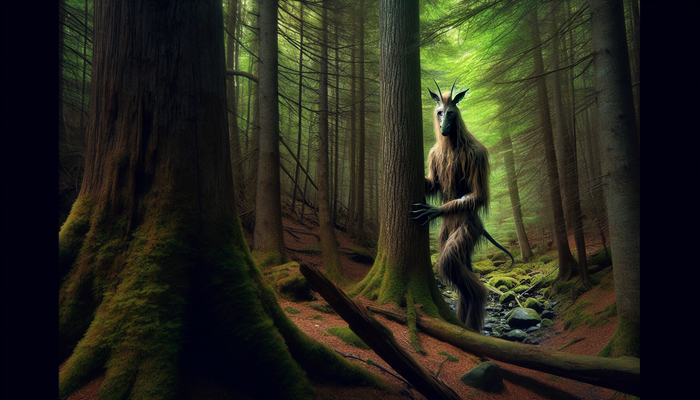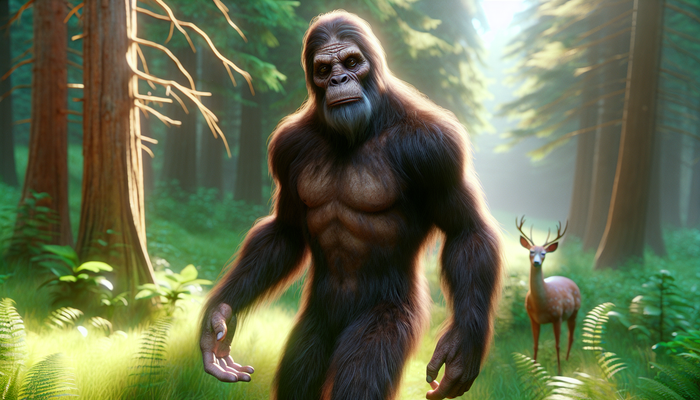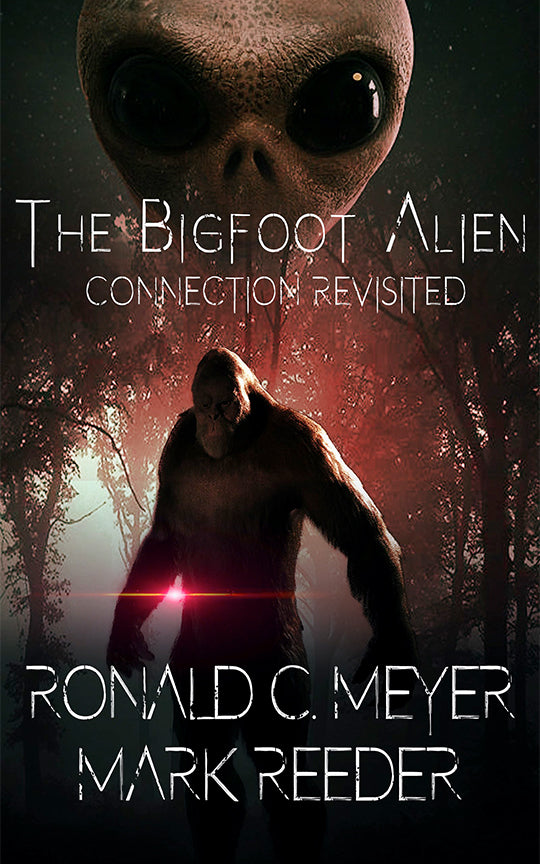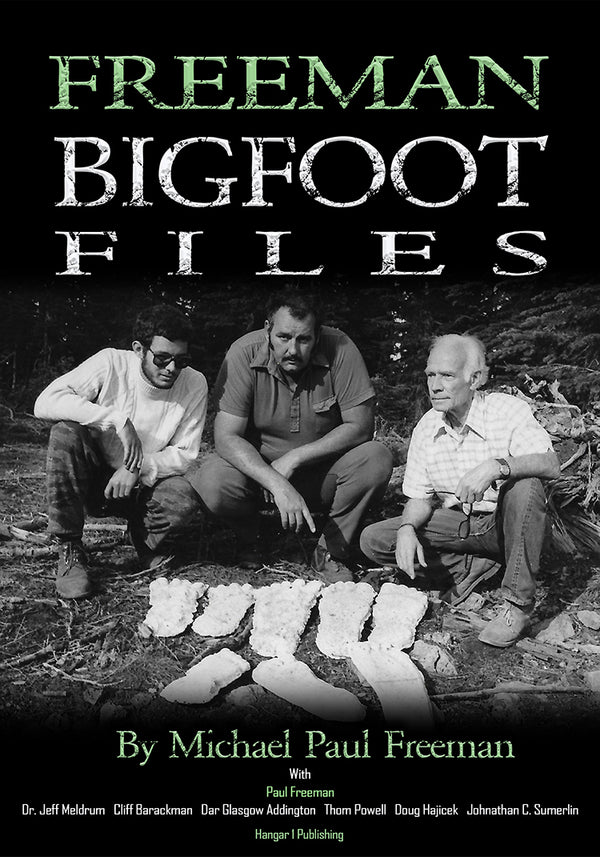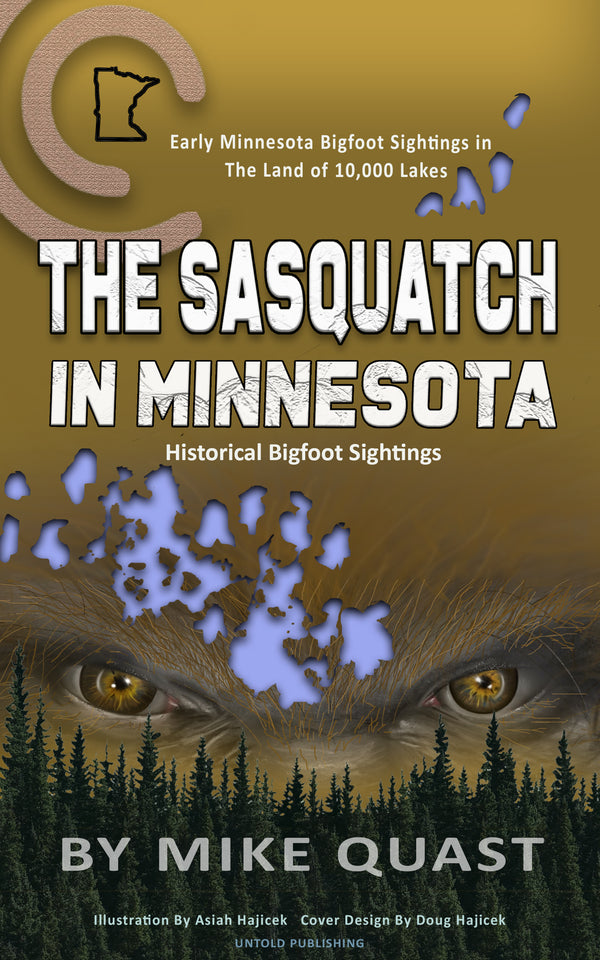Bigfoot Sightings in Missouri
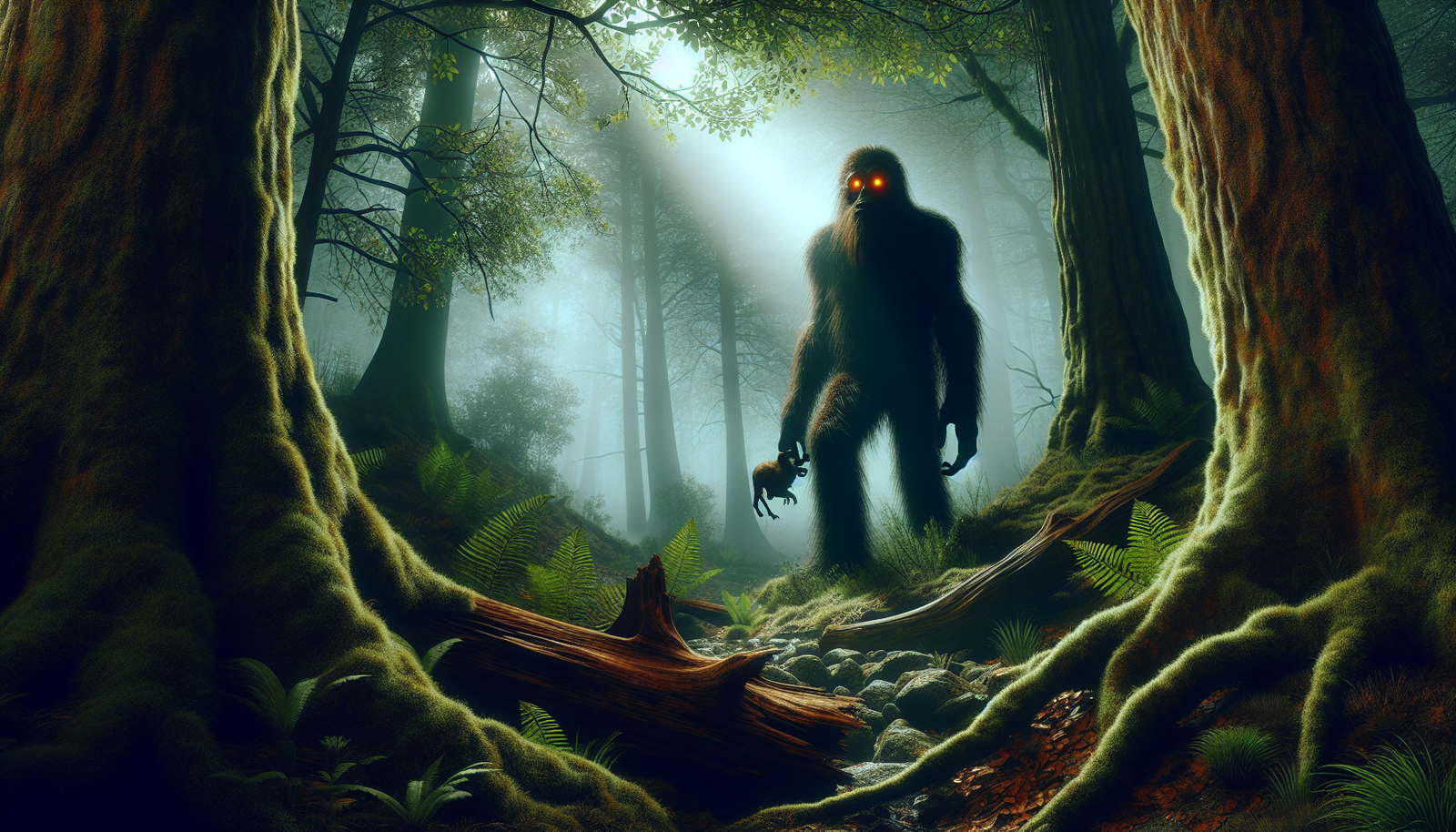
By Jack Sullivan, Cryptozoologist
In the realm of cryptozoology, few creatures have captured the imagination quite like Bigfoot. This elusive, humanoid beast has been the subject of countless stories, sightings, and debates, sparking a fascination that transcends generations and geographical boundaries. While reports of Bigfoot encounters span the globe, there is one state that stands out as a veritable hotspot for these mysterious occurrences: Missouri. With its rich history of sightings and encounters, Missouri has solidified its reputation as a prime location for those seeking to unravel the enigma of Bigfoot.
As a dedicated researcher and Bigfoot enthusiast, I have long been intrigued by the tales emanating from the Show-Me State. The sheer volume and consistency of these reports suggest that there may be more to this legend than mere folklore or misidentification. In this article, I will delve deep into the annals of Missouri's Bigfoot lore, examining the most compelling cases, exploring the cultural impact of these sightings, and considering the implications for the ongoing search for this cryptid. Join me on a journey through the dense forests, rugged terrain, and eerie encounters that have made Missouri a beacon for Bigfoot believers and skeptics alike.
The Legendary Momo Incident of 1972
The story of Bigfoot in Missouri is inextricably linked to one pivotal event: the Momo sightings of 1972. This series of encounters, centered around the small town of Louisiana, Missouri, would forever change the landscape of Bigfoot research in the state and beyond. At the heart of this legend lies the harrowing experience of the Harrison family.
On a fateful day in July 1972, 15-year-old Doris Harrison was going about her daily chores, cleaning the bathroom sink, while her younger brothers, Terry and Wally, played outside. Suddenly, the tranquility of the afternoon was shattered by the boys' terrified screams. Doris rushed to the window, her heart pounding, only to be confronted by a sight that would haunt her for years to come. There, at the edge of the woods, stood a massive, hairy creature, its form both human and beast. The creature's appearance was deeply disturbing, with matted fur, a foul odor, and a palpable sense of menace. Most unsettling of all was the sight of a dead dog clutched under its arm, a grim testament to the creature's predatory nature.
The Harrison family's ordeal was far from over. Edgar Harrison, the children's father, wasted no time in gathering his family and seeking refuge with relatives. The town of Louisiana, once a sleepy hamlet, was soon thrust into the national spotlight as word of the Momo sightings spread like wildfire. Media outlets from across the country descended upon the town, eager to report on the strange and terrifying events unfolding in the heartland.
As the story gained traction, local authorities and concerned citizens mounted a search effort, combing the wooded area known as Marzolf Hill in hopes of finding evidence of the creature. Armed men, numbering in the dozens, scoured the dense foliage, their determination fueled by a mixture of curiosity and fear. Despite their best efforts, no concrete proof of Momo's existence was found, leaving the community with more questions than answers.
The Momo incident may have ended without physical evidence, but its impact on the region was indelible. The creature, now christened "Momo" (short for "Missouri Monster"), became a fixture of local lore, inspiring festivals, merchandise, and a enduring sense of mystery. For the people of Louisiana and the surrounding areas, Momo was more than just a story; it was a shared experience that united the community in a quest for understanding.
As a researcher, I find the Momo incident to be a fascinating case study in the power of eyewitness testimony and the cultural resonance of Bigfoot legends. The Harrison family's account, while extraordinary, is not unique in the annals of Bigfoot sightings. What sets Momo apart is the way in which the community responded, the intensity of the media coverage, and the lasting impact on the region's identity. The Momo incident serves as a reminder that, whether one believes in Bigfoot or not, the stories we tell and the experiences we share have the power to shape our collective consciousness and our understanding of the world around us.
Ongoing Sightings and Encounters in Missouri
While the Momo incident of 1972 may be the most well-known Bigfoot encounter in Missouri, it is far from an isolated occurrence. In the decades since, the state has continued to be a hotbed of Bigfoot activity, with numerous sightings and encounters reported by individuals from all walks of life. These accounts, often shared by credible witnesses, paint a picture of an elusive creature that seems to inhabit the state's dense forests and rugged terrain.
One such encounter, both chilling and compelling, comes from a retired county sheriff who had a brush with the unknown in 1998. While patrolling a remote area of the Mark Twain National Forest late one night, the sheriff suddenly found himself face-to-face with a creature that defied explanation. The beast, estimated to be at least eight feet tall, possessed an imposing stature and a determined gait as it crossed the road in front of the sheriff's vehicle. The sheriff, a seasoned law enforcement officer and avid hunter, was struck by the creature's sheer size and the way it seemed to move with purpose, undeterred by the presence of the vehicle.
Despite the profound impact of this encounter, the sheriff chose to keep his sighting a secret for years, fearing the potential repercussions for his career and reputation. It was only after his retirement that he felt comfortable sharing his story, adding his voice to the growing chorus of individuals who have had their own encounters with Bigfoot in Missouri.
Another intriguing case emerged in 2018, when a group of Boy Scouts made a startling discovery near Lake Jacomo in the Lee's Summit area. The troop awoke one morning to find a series of large, unusual footprints outside their campsite, unlike anything they had seen before. Perplexed and excited by the find, the troop leader, Jeff Newhard, reached out to renowned Bigfoot researcher Tom Biscardi to investigate the scene. Biscardi and his team conducted a thorough examination of the area, even installing night-vision cameras in hopes of capturing evidence of the creature's presence.
While no definitive proof was obtained, the Boy Scouts' discovery adds to the growing body of circumstantial evidence suggesting that Bigfoot may indeed be roaming the forests of Missouri. The involvement of a high-profile researcher like Tom Biscardi also speaks to the seriousness with which these sightings are being treated by the Bigfoot community.
In 2019, the Lowlands Bigfoot organization conducted an extensive field research expedition near the Mark Twain National Forest, south of Salem, Missouri. During their time in the area, the team reported a series of strange occurrences and potential evidence of Bigfoot activity. From eerie vocalizations echoing through the night to the discovery of large, three-toed footprints, the expedition added fuel to the ongoing debate surrounding the creature's existence.
As a researcher, I find these ongoing sightings and encounters to be both fascinating and frustrating. On one hand, the consistency of the reports and the credibility of many of the witnesses suggest that there may be a genuine phenomenon at play. The fact that these sightings continue to occur, despite advances in technology and increased human encroachment on wild spaces, is a testament to the enduring mystery of Bigfoot.
On the other hand, the lack of definitive physical evidence remains a stumbling block for those seeking to prove the creature's existence once and for all. Skeptics argue, not without merit, that eyewitness testimony alone is insufficient to establish the reality of a species that would fundamentally alter our understanding of the natural world.
And yet, as someone who has dedicated countless hours to the study of Bigfoot, I cannot help but be drawn to these stories, to the possibility that there is still so much we have yet to discover about the world around us. The ongoing sightings and encounters in Missouri serve as a reminder that the search for Bigfoot is not a closed case, but an open invitation to explore, to question, and to keep an open mind in the face of the unknown.
The Ozark Mountain Bigfoot Conference
In the heart of Missouri's Bigfoot country, a gathering of like-minded individuals has emerged as a beacon for those seeking to unravel the mysteries of this elusive creature. The Ozark Mountain Bigfoot Conference, the first of its kind in the state, has become a hub for researchers, enthusiasts, and eyewitnesses alike, providing a platform for the sharing of knowledge, experiences, and theories surrounding Bigfoot's presence in Missouri.
The conference, a testament to the passion and dedication of its organizer, Mary Ann Ziebell, has quickly become a must-attend event for anyone with a serious interest in Bigfoot. Ziebell's vision for the conference was born out of a desire to create a space where individuals could come together to discuss the phenomenon without fear of ridicule or dismissal. In a world where Bigfoot is often relegated to the realm of tabloid fodder and late-night television, the Ozark Mountain Bigfoot Conference offers a rare opportunity for serious discourse and investigation.
The conference's inaugural event, held in the heart of the Ozarks, drew an impressive roster of guest speakers and experts from across the Bigfoot community. Representatives from the Bigfoot Field Researchers Organization (BFRO), the Ozark Mountain Sasquatch team, and even the producers of the Amazon Prime documentary "Into The 400: Looking for the Ozark Mountain Sasquatch" were on hand to share their insights and experiences. The diverse range of perspectives and expertise present at the conference was a testament to the growing interest in Bigfoot research, not just in Missouri, but across the country.
One of the key takeaways from the conference was the sheer volume of reported Bigfoot sightings in Missouri, particularly in the southwestern region of the state. According to the BFRO, Missouri ranks ninth in the nation for the most credible Bigfoot sightings, with over 160 reported incidents. This statistic alone is enough to give even the most skeptical observer pause, suggesting that there may be more to the Bigfoot legend than mere myth or misidentification.
Another intriguing concept that emerged from the conference was the idea of the "Ozark Mountain Sasquatch," a regional variation of the Bigfoot creature that is believed to inhabit the rugged, heavily forested areas of the Ozarks. This localized adaptation of the Bigfoot legend speaks to the way in which these stories can take on a life of their own, evolving and adapting to the unique characteristics of the landscapes and communities in which they are told.
The impact of the Ozark Mountain Bigfoot Conference on the Bigfoot community in Missouri cannot be overstated. The event has sparked a renewed interest in the creature's presence in the state, inspiring a new generation of researchers and enthusiasts to take up the mantle of investigation. Plans are already underway for future conferences, with the goal of expanding the scope and reach of the event, bringing in even more experts and eyewitnesses from across the country.
As a researcher, I find the emergence of events like the Ozark Mountain Bigfoot Conference to be a heartening development in the field of cryptozoology. For too long, the study of creatures like Bigfoot has been relegated to the fringes of scientific inquiry, dismissed as the domain of cranks and conspiracy theorists. But gatherings like this one demonstrate that there is a growing community of serious-minded individuals who are committed to approaching these mysteries with rigor, objectivity, and an open mind.
The Ozark Mountain Bigfoot Conference is more than just a gathering of Bigfoot enthusiasts; it is a testament to the enduring power of mystery and the human desire to explore the unknown. By bringing together individuals from all walks of life, united by a common passion for the search for Bigfoot, the conference has the potential to reshape the way we think about this enigmatic creature and the world we inhabit. As the conference continues to grow and evolve, I have no doubt that it will play an increasingly important role in the ongoing quest to unravel the mysteries of Bigfoot in Missouri and beyond.
The Beaman Monster and Other Missouri Cryptids
While Bigfoot may be the most famous cryptid associated with Missouri, the state is home to a veritable menagerie of mysterious creatures that have captured the imagination of locals and researchers alike. From the shadowy depths of the forests to the eerie corners of small-town lore, these cryptids have become an integral part of Missouri's rich tapestry of folklore and legend.
One of the most intriguing of these creatures is the Beaman Monster, a tale that has its roots in the early 20th century. According to legend, the Beaman Monster is the result of a tragic circus train derailment near the small town of Beaman, Missouri. The story goes that, in the aftermath of the accident, a massive, 12-foot-tall gorilla escaped from the wreckage and vanished into the surrounding wilderness.
Over the years, the legend of the Beaman Monster has evolved and taken on a life of its own. Some have speculated that the creature may have mated with a local Bigfoot population, giving rise to a new hybrid species that combines the strength and size of a gorilla with the elusiveness and adaptability of a Sasquatch. While the idea of a Bigfoot-gorilla hybrid may seem far-fetched, it speaks to the way in which these legends can capture the imagination and inspire new avenues of speculation and investigation.
Another cryptid that has left its mark on Missouri's folklore is the Ozark Howler, a creature that is said to inhabit the dense forests and rugged terrain of the Ozark Mountains. Described as a large, black, cat-like creature with glowing red eyes, the Ozark Howler has been the subject of numerous sightings and encounters over the years. Eyewitnesses have reported hearing the creature's eerie, howling cries echoing through the night, and some have even claimed to have had close encounters with the beast, describing its imposing size and fearsome appearance.
While the Ozark Howler may not have the same level of national recognition as Bigfoot, it has become an important part of Missouri's cryptozoological landscape. The creature's presence in the state's folklore serves as a reminder of the enduring mystery and allure of the unknown, and the way in which these legends can take on a life of their own within the communities that tell them.
In the southeastern corner of Missouri, another cryptid has emerged as a source of fascination and fear for locals and researchers alike. The Foulk Monster, named after the region in which it is said to reside, is a Bigfoot-like creature that shares many similarities with its more famous cousin. Described as a large, hairy, bipedal creature with a foul odor and an aggressive demeanor, the Foulk Monster has been the subject of numerous sightings and encounters over the years.
What sets the Foulk Monster apart from other Bigfoot-like creatures is its reported penchant for violence and aggression. Some eyewitnesses have claimed that the creature has charged at them, displaying a level of hostility that is not typically associated with Bigfoot sightings. While these reports remain unverified, they have contributed to the Foulk Monster's reputation as a particularly fearsome and unpredictable cryptid.
From Bigfoot to UFOs: Hangar 1 Publishing Has You Covered!
Explore Untold Stories: Venture into the world of UFOs, cryptids, Bigfoot, and beyond. Every story is a journey into the extraordinary.
Immersive Book Technology: Experience real videos, sights, and sounds within our books. Its not just reading; its an adventure.


